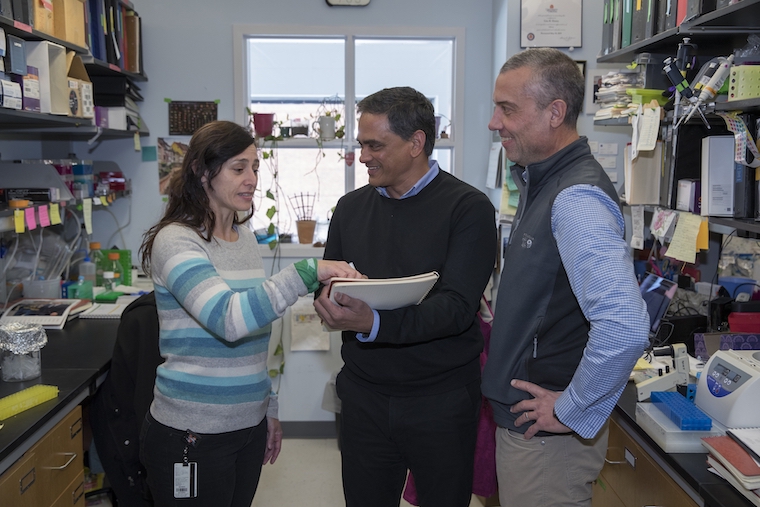Our Kodi Ravichandran, Jeffrey Lysiak and Claudia Rival have made a surprising discovery about fertilization that recasts the role of the egg, could help couples struggling with infertility and could open the door for a new male contraceptive.
“Fertilization has been studied for 100 years. One would think we would have figured out something as fundamental as fertilization,” Ravichandran observed. But no, it turns out there’s more to learn. Or, as he put it, “There are still many black boxes we don’t understand.”
Strange observations in the lab led to the discovery. During their research into sperm development, the scientists noticed some immature sperm that they assumed were dying. These sperm had a molecular marker on their surface suggestive of a dying cell, but these sperm were alive and kicking. “This initially made no sense,” Lysiak said. “We had to do a lot of experiments to show that, indeed, these were live, motile sperm.”
This marker, phosphatidylserine, is normally held inside cells until they die. But it is also exposed, quite deliberately, on healthy sperm, the researchers determined.
So why is it there? The egg has protein partners that specifically engage the phosphatidylserine. The egg, it turns out, isn’t just sitting there waiting passively for the sperm to penetrate it. Instead, it’s a more complicated dance. “High school biology taught us a very sperm-centric version of fertilization,” Ravichandran said. “And now it’s very clear that it is a dynamic process where both the sperm and egg are equally and actively involved in the ultimate biological goal of achieving fertilization.”
The researchers found that blocking phosphatidylserine offered a very effective way to prevent fertilization. That makes them think it could be used to develop a new male contraceptive. It also could help couples struggling with infertility. For example, the marker could be used to identify sperm that are most likely to result in pregnancy during in-vitro fertilization. That could increase the couple’s chances and help keep costs down.
“The infertility experts here at UVA are very excited about this,” Lysiak said. “This tells us a lot about fundamental biology, but we think it could also have important clinical applications.”
